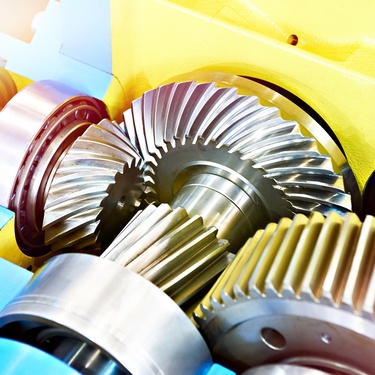
Power transmission forms the backbone of our modern electrical infrastructure, yet many people don’t fully understand how electricity travels from power plants to their homes. This system moves electrical energy across vast surfaces, keeping devices powered and our industries running. Understanding the basics of power transmission systems can help us understand the machinery used in everyday applications.
What Are Power Transmission Systems?
Power transmission systems are mechanical arrangements that transfer energy from a power source (like an electric motor or engine) to the components that need to move. They transmit power from one place to another and can modify the speed or torque characteristics of the power source.
Core Components
Each system relies on smaller components. For power transmission systems, they work within a series of gears, belts, pulleys, and chains to power devices and transfer energy.
Gears
Gears are toothed wheels that mesh together to transmit rotational motion and force. They’re incredibly versatile, allowing you to increase torque while reducing speed or vice versa.
Gear ratio determines how the system behaves. A small gear driving a larger gear increases torque but reduces speed. Reverse this arrangement, and you get higher speed with less torque.
Bearings
Bearings are critical components in power transmission systems designed to reduce friction between moving parts and support rotational or linear motion. With different models, bearings can benefit a variety of machines and work effectively with them.
Bearings, such as ball bearings, utilize spherical rolling elements and are ideal for handling both radial and axial loads. Another bearing is the pillow block bearing, which is suitable for power transmission. Pillow block bearings have numerous applications in power transmission, enabling machinery to operate efficiently and transfer energy more effectively.
Types of Power Transmission Systems
Mechanical systems utilize physical components such as gears, belts, and chains. They’re reliable and easy to maintain, and they don’t require external power sources beyond the prime mover.
Hydraulic systems use pressurized fluid to transmit power to another place. They provide smooth operation and can generate enormous forces, making them popular in heavy machinery and construction equipment.
Meanwhile, electrical systems convert mechanical energy to electrical energy, transmit it through wires, and then convert it back to mechanical energy. This approach enables power transmission over long distances with minimal power loss.
Real World Applications
Different industries use power transmission systems within their machinery. Automotive transmissions use complex gear systems to match engine characteristics with driving requirements.
Wind turbines also use massive gearboxes to convert slow blade rotation into the high-speed rotation needed for efficient electricity generation. Both industries utilize the system to improve and develop their own machinery in better ways.
Understanding the basics of power transmission systems can help you comprehend how the world utilizes this technology for various purposes. Power transmission systems form the mechanical foundation of our technological world. Regardless of whether you’re maintaining equipment or designing new machinery, these fundamentals will serve you well.
Bio: Casey is a passionate copyeditor highly motivated to provide compelling SEO content in the digital marketing space. Her expertise includes a vast range of industries from highly technical, consumer, and lifestyle-based, with an emphasis on attention to detail and readability.




















